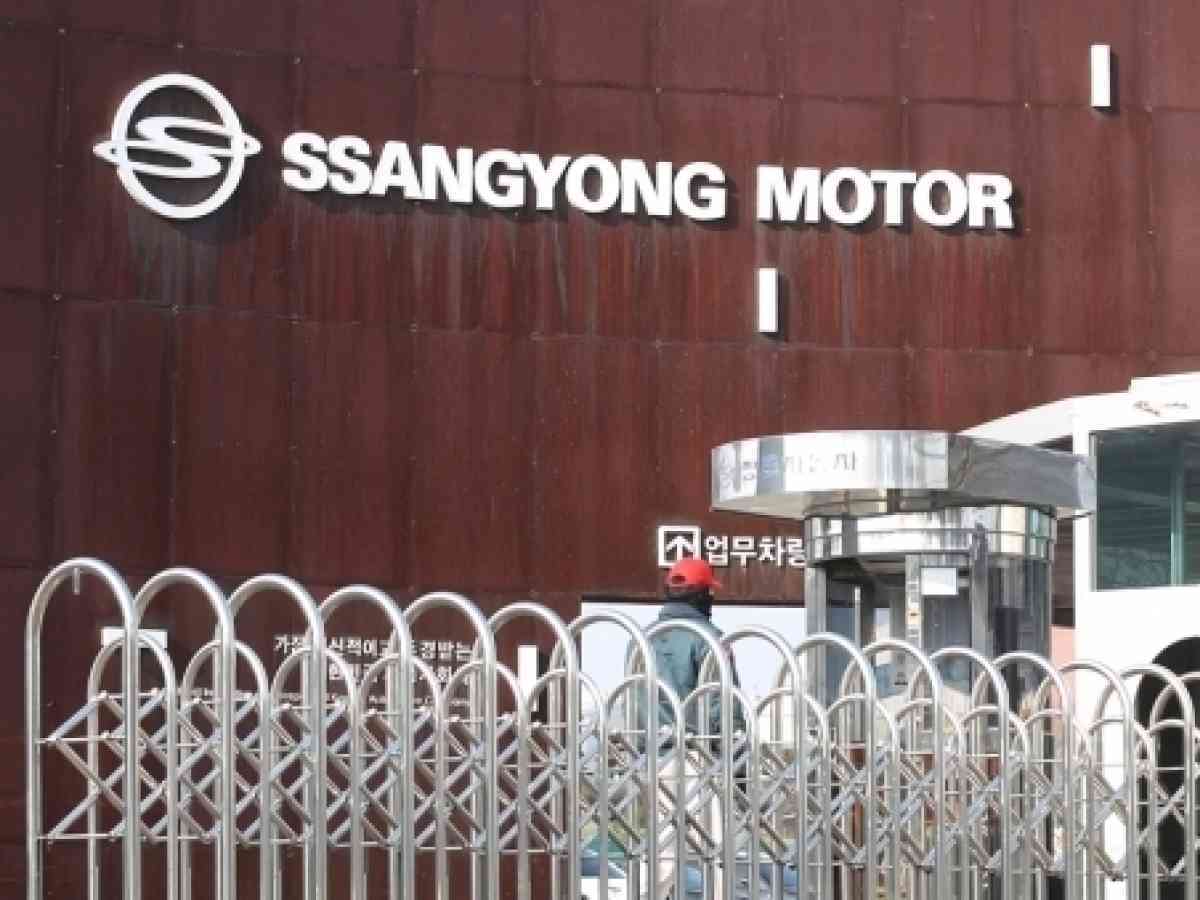 |
(Yonhap) |
The application for court receivership this week by SsangYong Motor, the second of its kind in a little over a decade, shows the limit and risk of corporate restructuring work swayed by political logic.
On Monday, SsangYong, the South Korean unit of Indian carmaker Mahindra & Mahindra, took the measure after it defaulted on 60 billion won ($54 million) in debts to its foreign creditor banks last week. The lenders rejected an earlier request by the company to roll over the loans.
SsangYong also failed to repay 105 billion won due Monday to two of its local creditors, including the state-run Korea Development Bank.
SsangYong now owes a total of 315.3 billion won in overdue debt to foreign and domestic lenders, which accounts for 42 percent of its capital of 749.2 billion won, according to figures made public by the company Tuesday.
The sports utility vehicle-focused carmaker has lost its debt-servicing capacity as it has been reeling from 15 consecutive quarters of losses due to sluggish sales and a lack of new models since the first quarter of 2017. Its operating losses ballooned from 65.3 billion won in 2017 to 309 billion won in the first nine months of 2020.
A Seoul court granted the debt-ridden company a three-month moratorium on restructuring. If it finds a new investor or rebuilds creditors’ trust during the period, its management could be put back on track. This scenario would be impossible without thorough self-rescue efforts.
With the jobs of tens of thousands of workers at the automaker and its subcontractors and the livelihoods of their families at stake, calls may be rising for state support for the indebted company. But lessons should be learned from what led to its current predicament.
SsangYong placed itself under court receivership -- one step short of bankruptcy in Korea’s legal system -- for the first time in 2009.
In the period, the court decides whether and how to revive a company.
China-based SAIC Motor Corp. acquired a 51 percent stake in SsangYong in 2004, but in 2009 relinquished its control of the carmaker in the aftermath of the global financial crisis.
In 2011, Mahindra acquired a 70 percent stake in SsangYong for 523 billion won and its share has increased to 74.65 percent since then. Mahindra says it does not have a plan to inject fresh capital into SsangYong and will give up its status as majority shareholder if a new investor is found. Early this year Mahindra announced a plan to inject 230 billion won into SsangYong for the following three years but its board voted against the investment plan last month, as the prolonged coronavirus pandemic continued to weigh down on vehicle sales.
In August, a local accounting firm auditing SsangYong declined to give its opinion on the carmaker’s earnings results for the January-June period. It is expected to do the same on the annual financial statement of SsangYong, which its management says will need at least 500 billion won to turn itself around by 2022.
Over the past years, it has been negligent on carrying out restructuring and preparing for the era of electric and hydrogen-powered cars. Under pressure from President Moon Jae-in’s administration, which is tilted toward labor interests, it has reemployed about 2,000 workers who were laid off when the company went through the first court receivership, resulting in exacerbating its financial difficulties. Mahindra’s flip-flop on its pledge to inject fresh capital into SsangYong appears based on calculations that the Moon government will not let the company go belly up.
The administration and the ruling Democratic Party of Korea may be further tempted to extend a helping hand to the faltering company ahead of crucial mayoral by-elections in the country’s two largest cities -- Seoul and Busan -- in April. But pouring taxpayers’ money into the company, which experts say stands little chance of surviving the intensifying competition in the car industry, could cause a greater problem and deprive more competitive companies of opportunities to pull themselves out of temporary difficulties with the minimum support of the government.
In the coming months, SsangYong’s labor and management should focus on making painstaking self-rescue efforts and working out plans to improve its competitiveness before looking for outside help.








